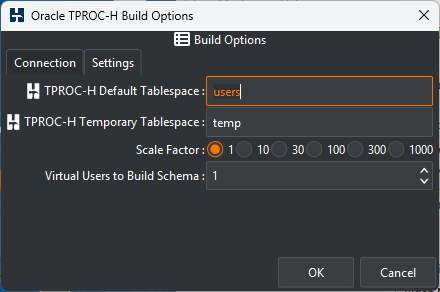TPROC-H workloads run complex queries scanning large volumes of data and therefore require the use of database features such as parallel query and in-memory column stores to maximise performance. With the available HammerDB TPROC-H based workloads the three databases that support these features are the Enterprise Editions of Oracle, SQL Server and Db2 and therefore these databases will deliver the best experience for building and running TPROC-H. Over time there has been improvement with open-source and open-source derived databases in the ability to run TPROC-H workloads. For example PostgreSQL supports Parallel Query and the PostgreSQL derived versions of Amazon Redshift and Greenplum offer further accelerated query solutions. MySQL does not support an analytic storage engine however the MariaDB column store storage is best suited for running analytic tests against MySQL. Nevertheless it is known that with some or all of the open source solutions a number of queries either fail or are extremely long running due to the limitations of the databases themselves (and not HammerDB) in optimizing the queries.
The Oracle database is fully featured for running TPROC-H based workloads and presents two options for configuring the database either row oriented parallel query or the In-Memory Column Store (IM column store). Both of these configurations are able to run a full TPROC-H workload and are configured on the database as opposed to configuring with HammerDB.
SQL Server is able to support a full TPROC-H workload and offers row oriented parallel query as well as in-memory column store configured. The clustered columnstore build is selected through the HammerDB Build Options.
Db2 can support a full TPCH workload through row oriented parallel query and Db2 BLU in-memory column store. The column store is selected through the Db2 Organize by options.
PostgreSQL supports standard row oriented parallel query. This offers significant performance improvement over single-threaded queries however not all queries at all schema sizes are expected to complete without database error and some run for a significant length of time. Options are also available to run the PostgreSQL queries against a Greenplum database. It is important to be aware that because of the Greenplum MPP architecture there is significant overhead in processing INSERT operations and therefore data should be loaded in bulk after generating with the HammerDB datagen operation.
A standard install of MySQL with the innodb storage engine does not support row oriented parallel query or a column store configuration and therefore queries run against a MySQL database are expected to be long-running. Alternatively HammerDB supports running against a MySQL Heatwave column store which offers improved analytic performance.
